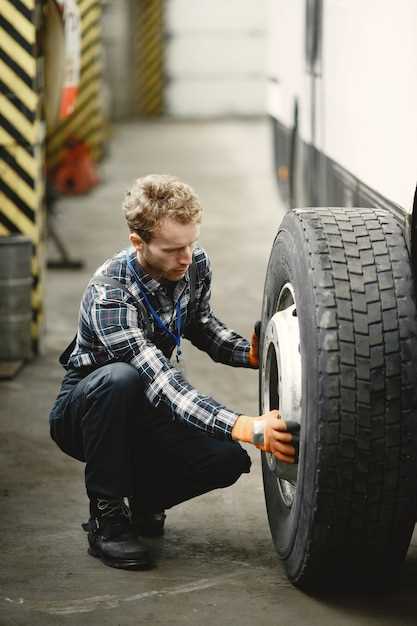
Proper tire rotation is an essential aspect of vehicle maintenance that directly impacts both performance and safety. Regularly rotating your tires can help ensure even tread wear, which is critical for maintaining optimal grip on the road. Uneven tire wear can lead to decreased traction, affecting handling and stability, particularly in adverse weather conditions.
Incorporating a tire rotation routine into your vehicle maintenance schedule not only extends the lifespan of your tires but also enhances overall driving performance. By redistributing tire wear across all four tires, you can improve fuel efficiency and ensure a smoother ride. This practice reduces the likelihood of blowouts or accidents, further underscoring its importance for your safety on the road.
In this article, we will explore the best practices for tire rotation, addressing different patterns based on your vehicle type and drive system. Understanding these techniques can empower you to take control of your vehicle’s performance and safety, making tire rotation a crucial part of your automotive care regimen.
Understanding Tire Wear Patterns and Their Impact on Performance
Proper maintenance of your tires is crucial for achieving optimal performance and ensuring safety on the road. One key aspect of tire maintenance involves understanding the various wear patterns that can develop over time. These patterns not only indicate the health of your tires but also significantly affect your vehicle’s overall performance.
One common wear pattern is center wear, which occurs when the tread in the center of the tire is worn down more than the edges. This typically results from over-inflation, leading to reduced contact with the road surface. As a result, handling can become less predictable, increasing the risk of accidents due to inadequate grip.
On the contrary, edge wear happens when the outer edges of the tire wear down disproportionately. This can be attributed to under-inflation or improper wheel alignment. Edge wear compromises steering response and stability, making it essential to regularly check tire pressure and alignment to maintain safety.
Patchy wear shows irregular patterns on the tire surface, often indicating issues like misalignment or suspension problems. Such wear can lead to vibrations while driving, impacting comfort and control. Addressing these underlying issues early can enhance tire longevity and overall vehicle performance.
Additionally, cupping generally presents as a series of high and low spots on the tire tread, often resulting from worn-out suspension components. This uneven wear not only affects ride quality but can also lead to excessive noise, further distracting the driver and compromising safety.
In conclusion, recognizing and understanding tire wear patterns is essential for maintaining performance and safety. Regular tire inspections, rotation, and proper maintenance can help drivers avoid potential hazards and ensure a smoother, more efficient ride.
Step-by-Step Guide to Proper Tire Rotation Techniques

Tire rotation is an essential maintenance practice that helps enhance the longevity and performance of your tires. Following a systematic approach ensures that each tire wears evenly, contributing to better traction, handling, and fuel efficiency. Here is a comprehensive guide on how to properly rotate your tires.
1. Gather Necessary Tools: Before you begin, gather the necessary tools including a jack, jack stands, a lug wrench, and a torque wrench. This ensures you have everything needed to safely elevate the vehicle and remove the tires.
2. Check Tire Condition: Inspect your tires for any visible damage such as cracks, bulges, or uneven wear patterns. Address any issues before proceeding with rotation to prevent further problems.
3. Locate Your Owner’s Manual: Consult your vehicle’s owner’s manual for specific recommendations regarding tire rotation patterns. Different drive types (front-wheel, rear-wheel, all-wheel) may require different approaches.
4. Secure the Vehicle: Park the car on a level surface, engage the parking brake, and loosen the lug nuts slightly while the tires are still on the ground. This prevents the wheels from spinning when you are removing the tires.
5. Lift the Vehicle: Using a jack, lift the vehicle and securely place jack stands under the appropriate points as indicated in your owner’s manual. Ensure the vehicle is stable before removing the tires.
6. Remove the Tires: Carefully remove the lug nuts completely and take off the tires, placing them in a location where you can work on them effectively.
7. Rotate the Tires: Follow the recommended tire rotation pattern. For front-wheel drive vehicles, typically move the front tires to the rear on the same side and cross the rear tires to the front. For rear-wheel drive vehicles, reverse this pattern. For all-wheel drive, consult specific recommendations as patterns can vary.
8. Reinstall the Tires: Place the tires back on their new positions, hand-tightening the lug nuts to secure them in place. Ensure the correct torque settings are applied when fully tightening them with a torque wrench.
9. Lower the Vehicle: Carefully lower the vehicle back to the ground and remove the jack stands. Finish tightening the lug nuts while the vehicle is on the ground to ensure proper seating.
10. Final Inspection: After rotation, double-check the tire pressures and make sure they are within the recommended range. Additionally, perform a visual inspection to ensure everything is properly secured.
By regularly rotating your tires and following these steps, you can maximize their performance and longevity, ensuring a safer and more efficient driving experience.
Safety Considerations When Rotating Your Tires

When performing a tire rotation, safety should be your top priority. Proper rotation is essential for maintaining even tire wear and prolonging the life of your tires, but it must be conducted safely to prevent accidents and malfunctions. Here are some important safety considerations to keep in mind.
1. Use the Right Tools
Ensure you have the correct tools before starting the rotation. A reliable jack, jack stands, and a wrench suitable for your vehicle’s bolts are crucial. Using inadequate or faulty tools can lead to dangerous situations.
2. Check Tire Condition
Before rotating, inspect each tire for signs of damage, such as cuts, bulges, or uneven wear. Tires that are compromised can lose pressure or fail during driving, posing a serious safety hazard.
3. Follow Manufacturer Guidelines
Consult your vehicle’s owner manual for specific rotation patterns and frequencies. Adhering to manufacturer recommendations ensures that you are maintaining optimal safety and performance standards.
4. Secure Your Vehicle
Before lifting the vehicle, park it on a flat, stable surface and engage the parking brake. Once lifted, ensure the vehicle is securely supported by jack stands. This prevents accidental falls, which can result in injuries or fatalities.
5. Wear Protective Gear
Consider wearing safety glasses and gloves while rotating your tires. These items protect against potential injuries from sharp objects or heavy tire equipment.
6. Double-Check Your Work
After completing the rotation, check that all lug nuts are properly tightened according to specifications. Failing to secure lug nuts correctly can lead to wheel detachment while driving, resulting in severe accidents.
By being mindful of these safety considerations during tire rotation, you can enhance your vehicle’s performance and ensure safe driving experiences. Always prioritize safety to protect yourself and others on the road.




